Abstract
The nuclear magnetic resonance (NMR) spectrum of sodium was determined in muscle and erythrocytes using conventional continuous wave techniques. NMR spectra of fresh intact muscle revealed a single line with a width of about 38 Hz equivalent in intensity to about 53% of the total muscle sodium, in general agreement with previous work. Prolonged washing with sodium-free solutions led to a marked loss of both total and NMR-detectable sodium. The NMR-visible sodium remaining in the muscle was somewhat larger than the fraction calculated to remain extracellular and, presumably, was intracellular. The original sodium signal is thus interpreted as arising from both extracellular sodium and the narrow line portion of the signal from intracellular sodium. NMR spectra of sodium were also obtained for human erythrocytes under conditions preserving the sodium transport system. The intensity of the sodium signal in fresh cells was 98% of that present in the same samples after complete hemolysis of the cells. The NMR sodium present in intact cells was 92% of the sodium recovered by flame photometric determination of sodium from ashed samples. It is concluded that no NMR-“invisible” sodium occurs in human erythrocytes and that the presence of such sodium is not necessary for the normal functioning of the sodium transport system in erythrocytes.
Full text
PDF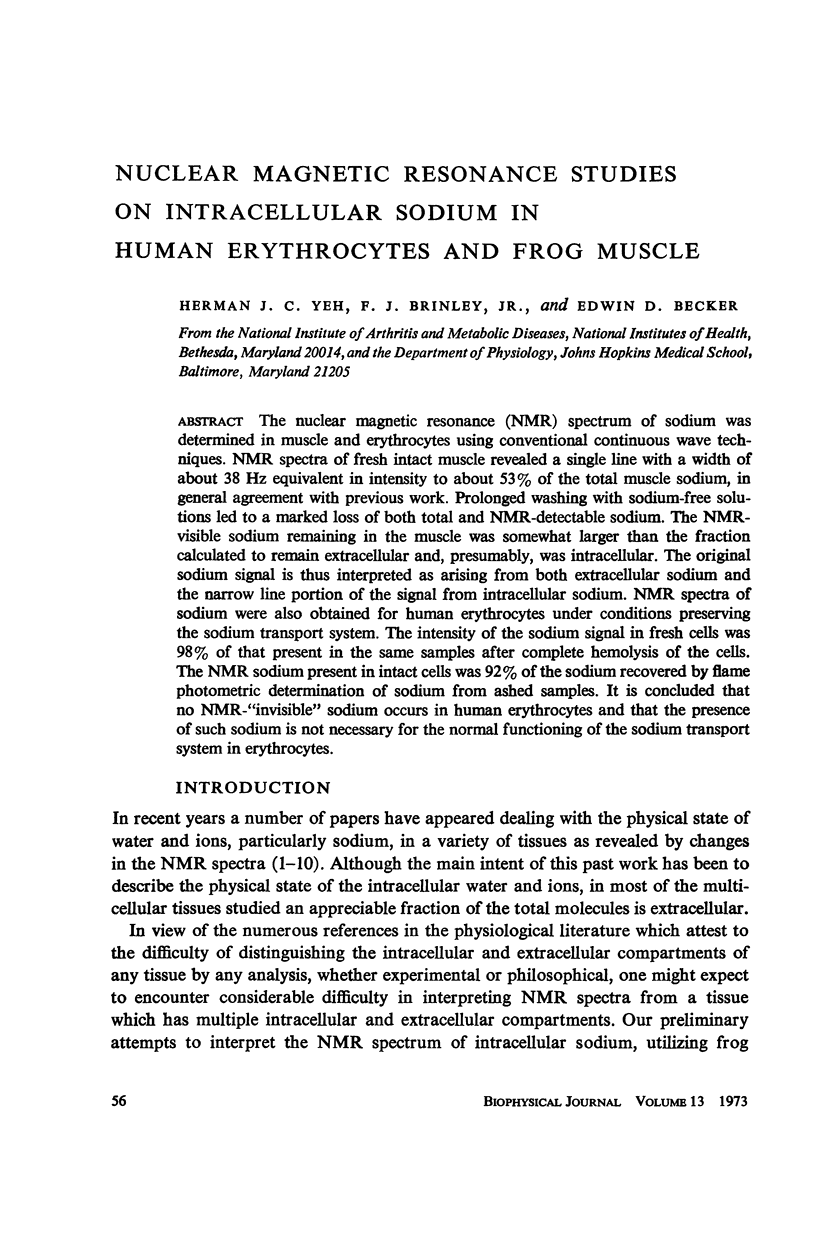
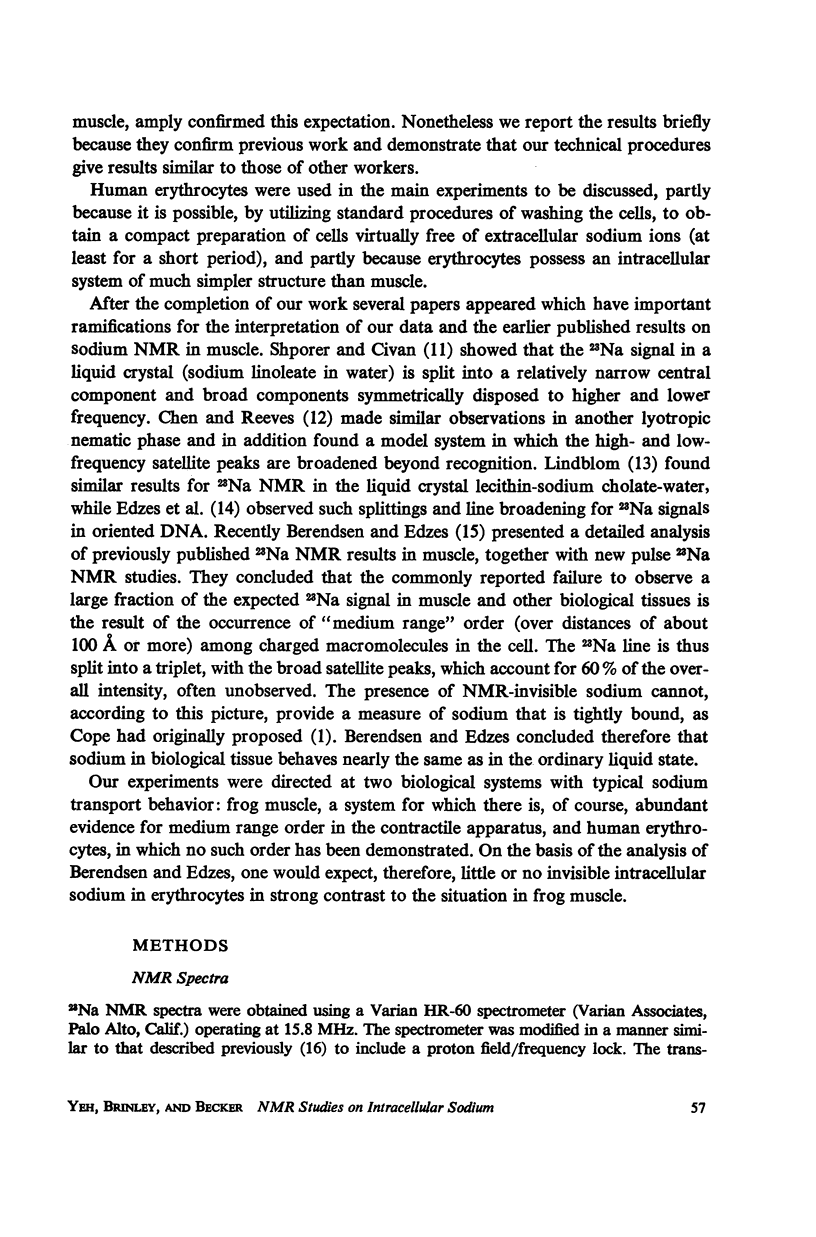
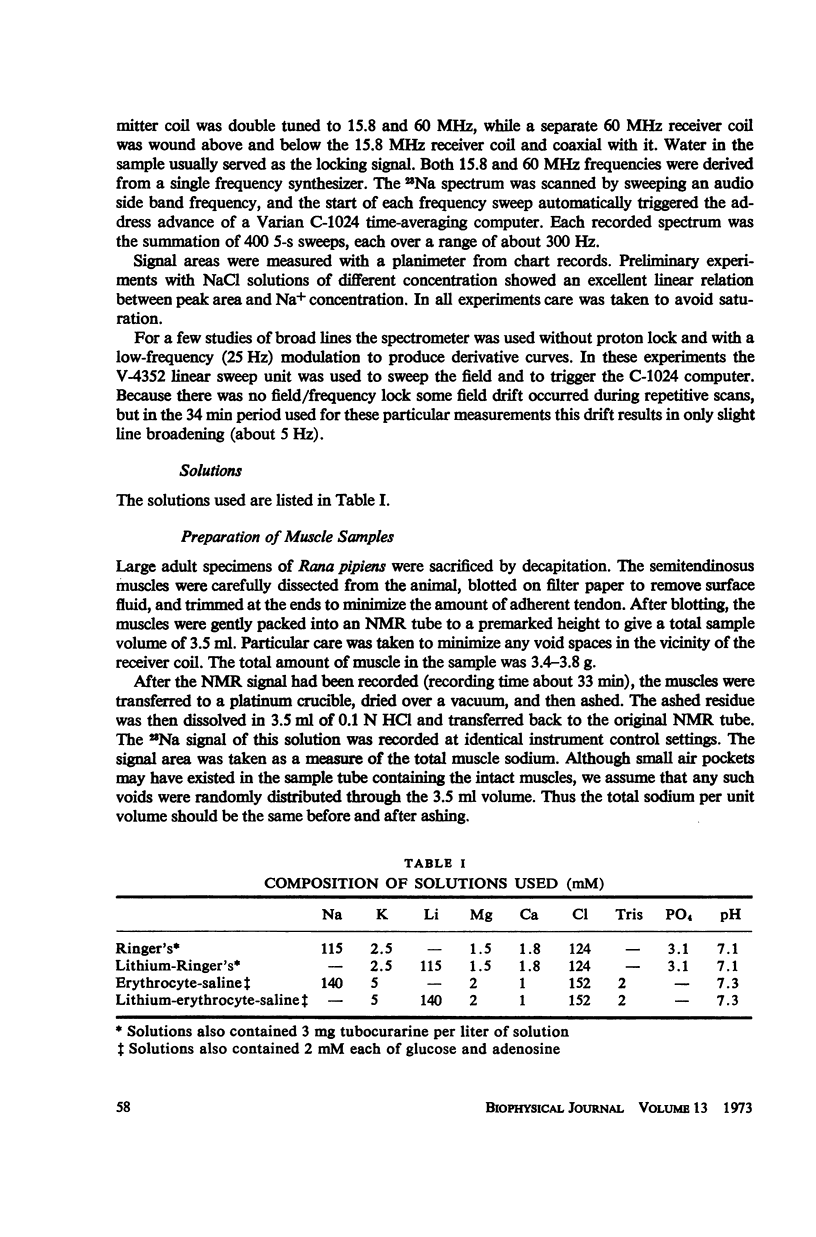
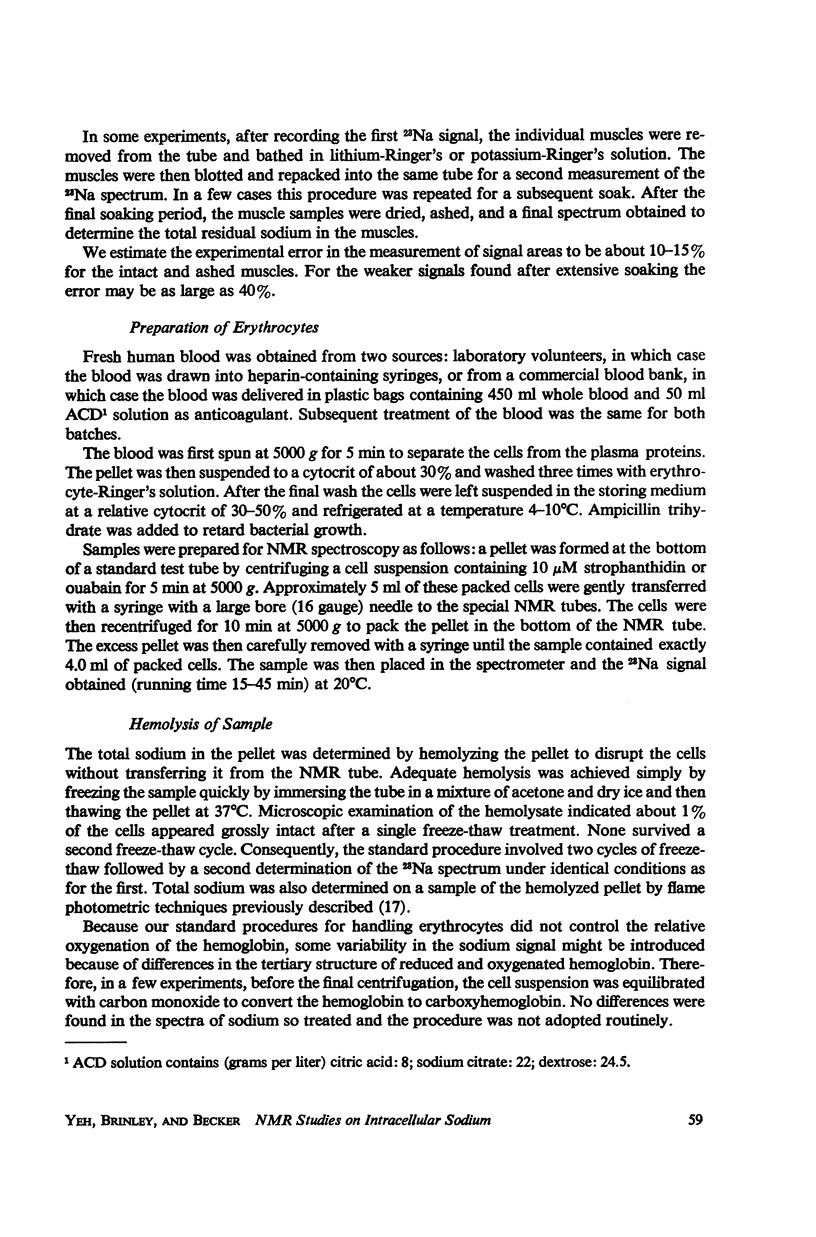
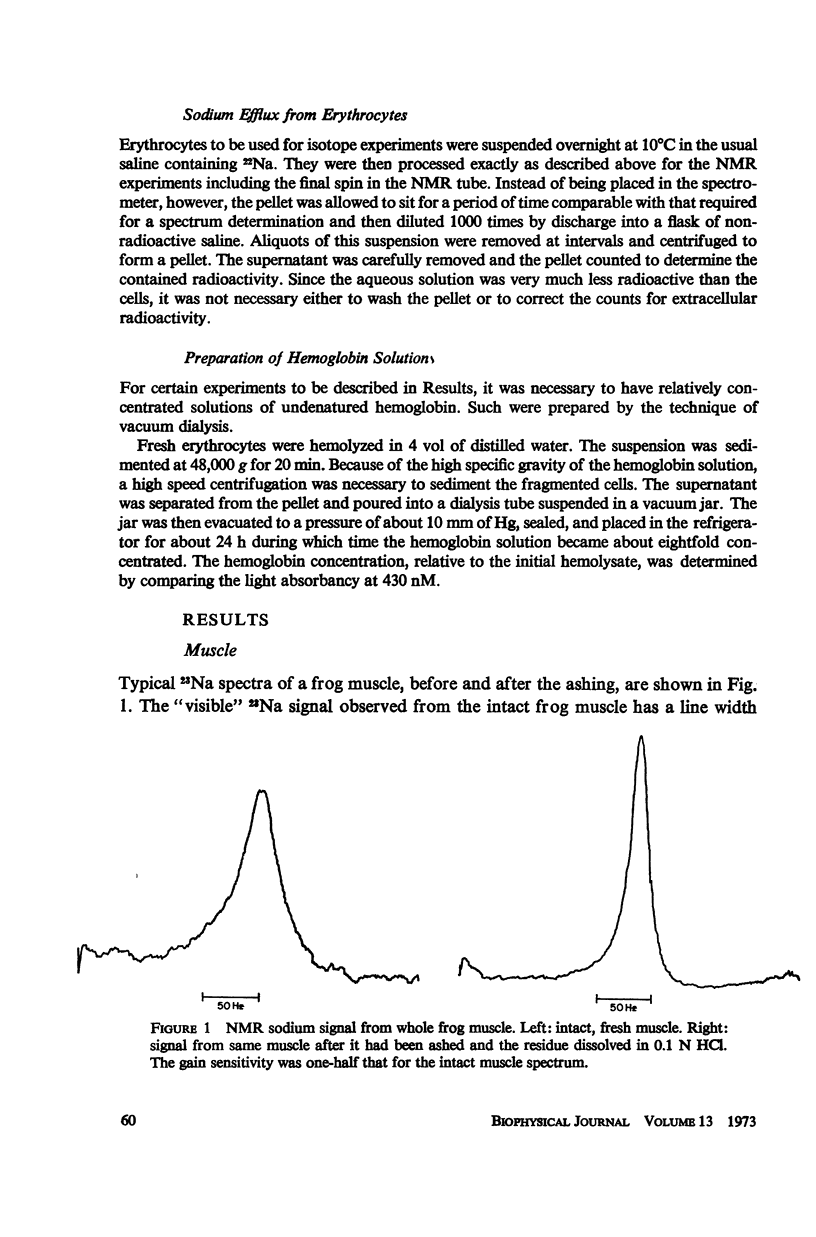
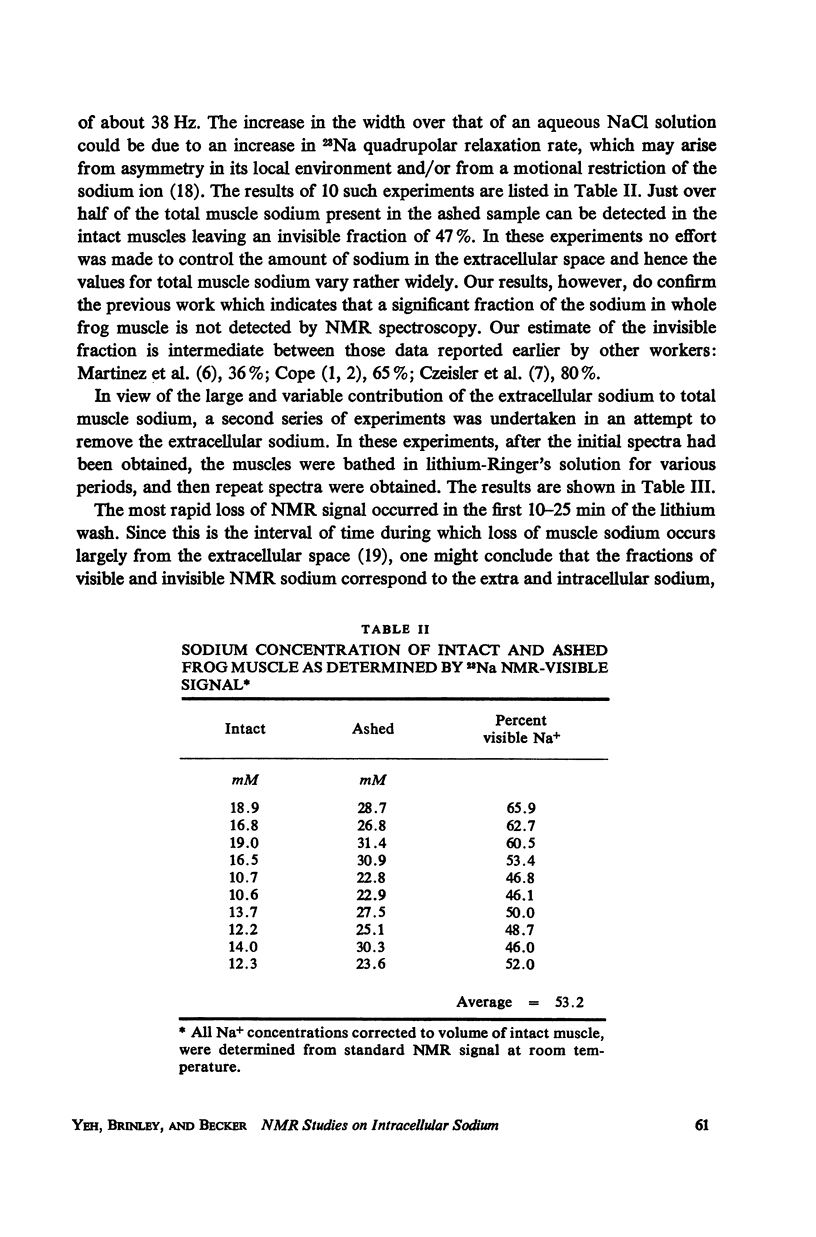
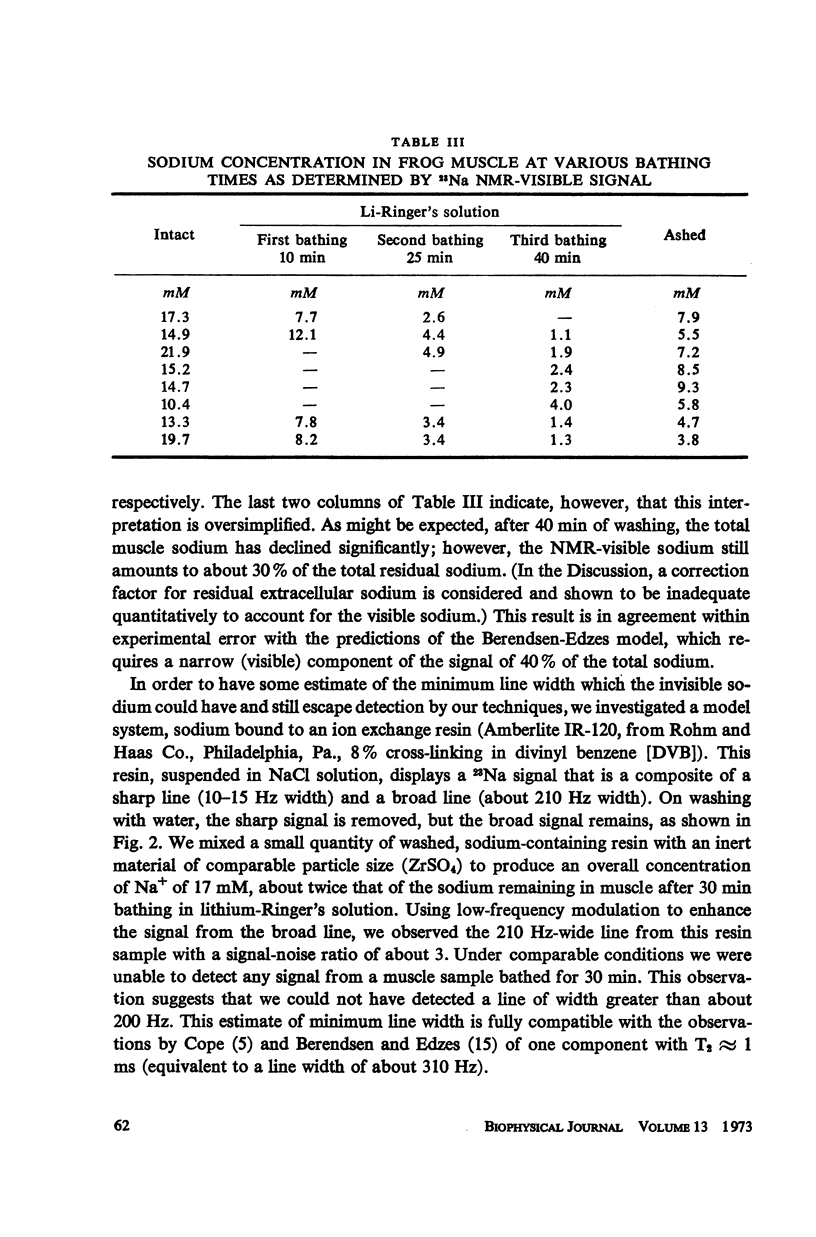
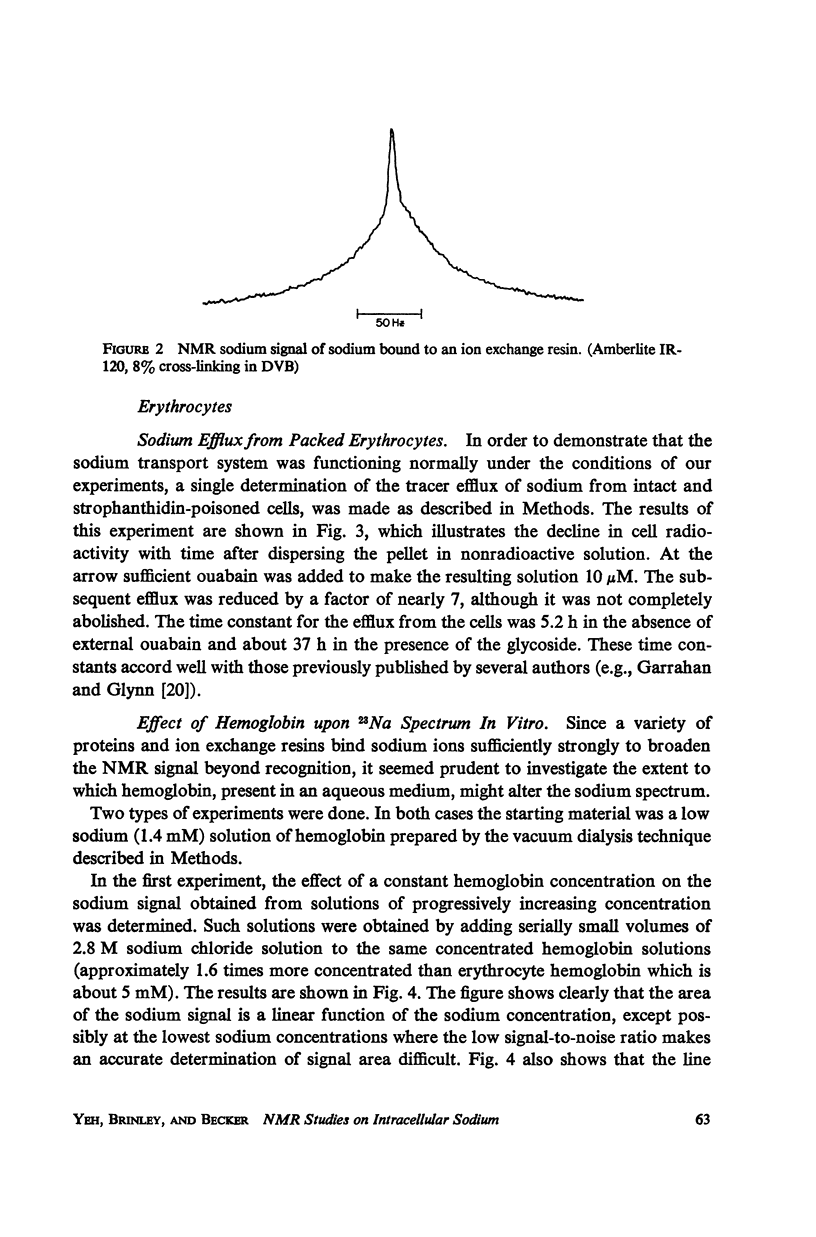
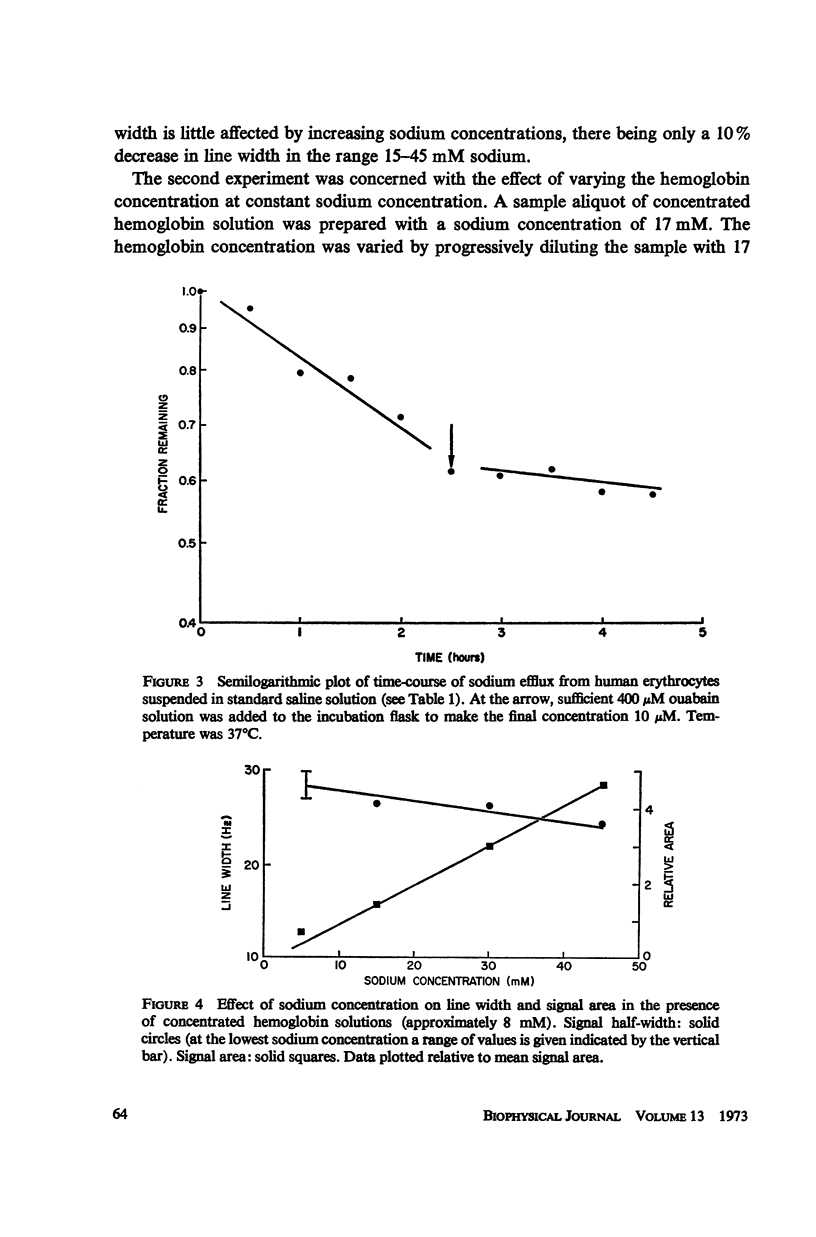
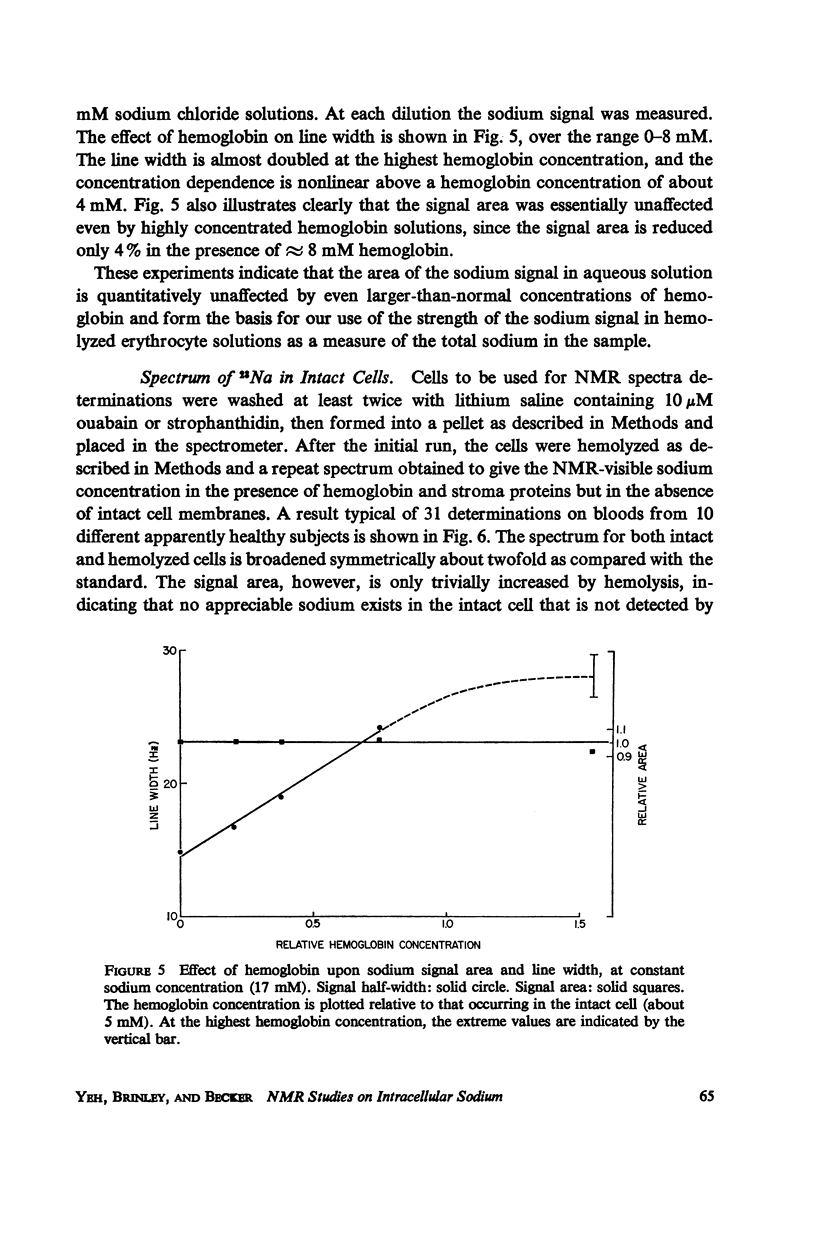
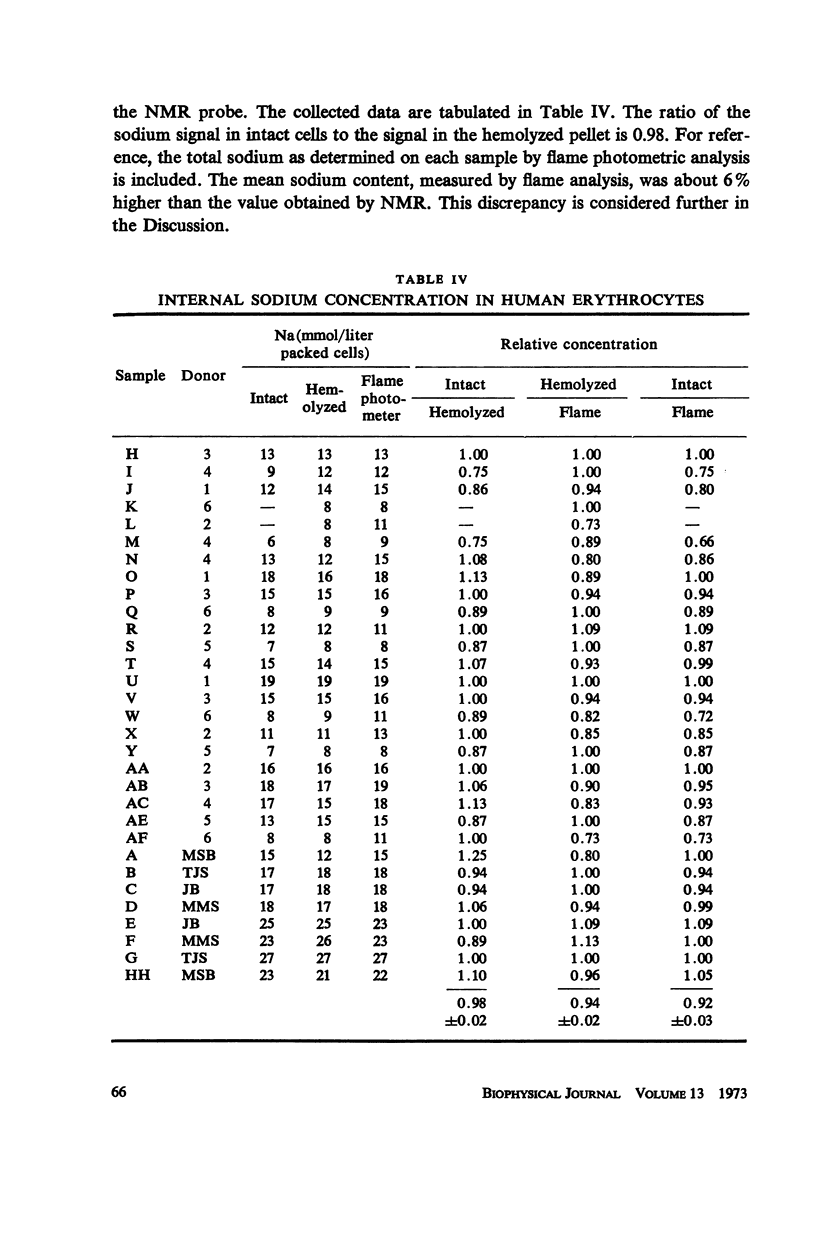
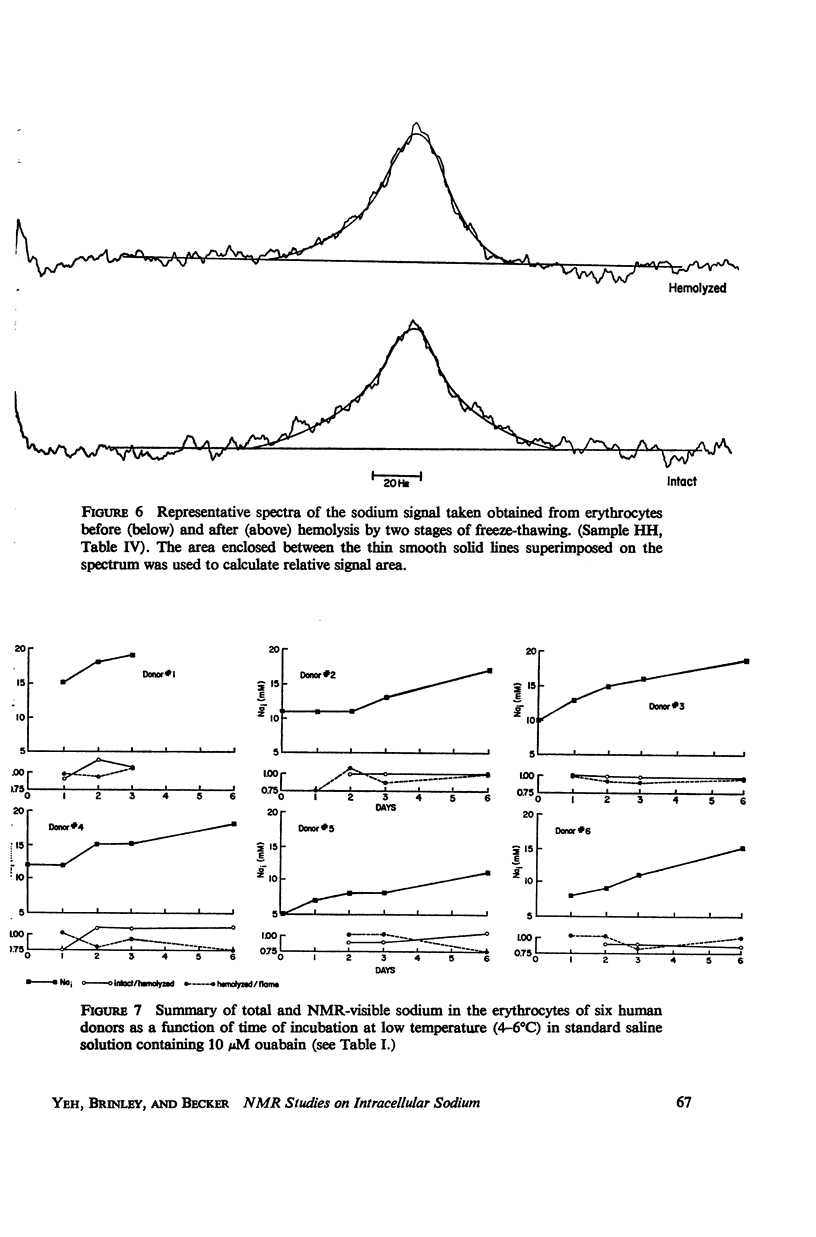
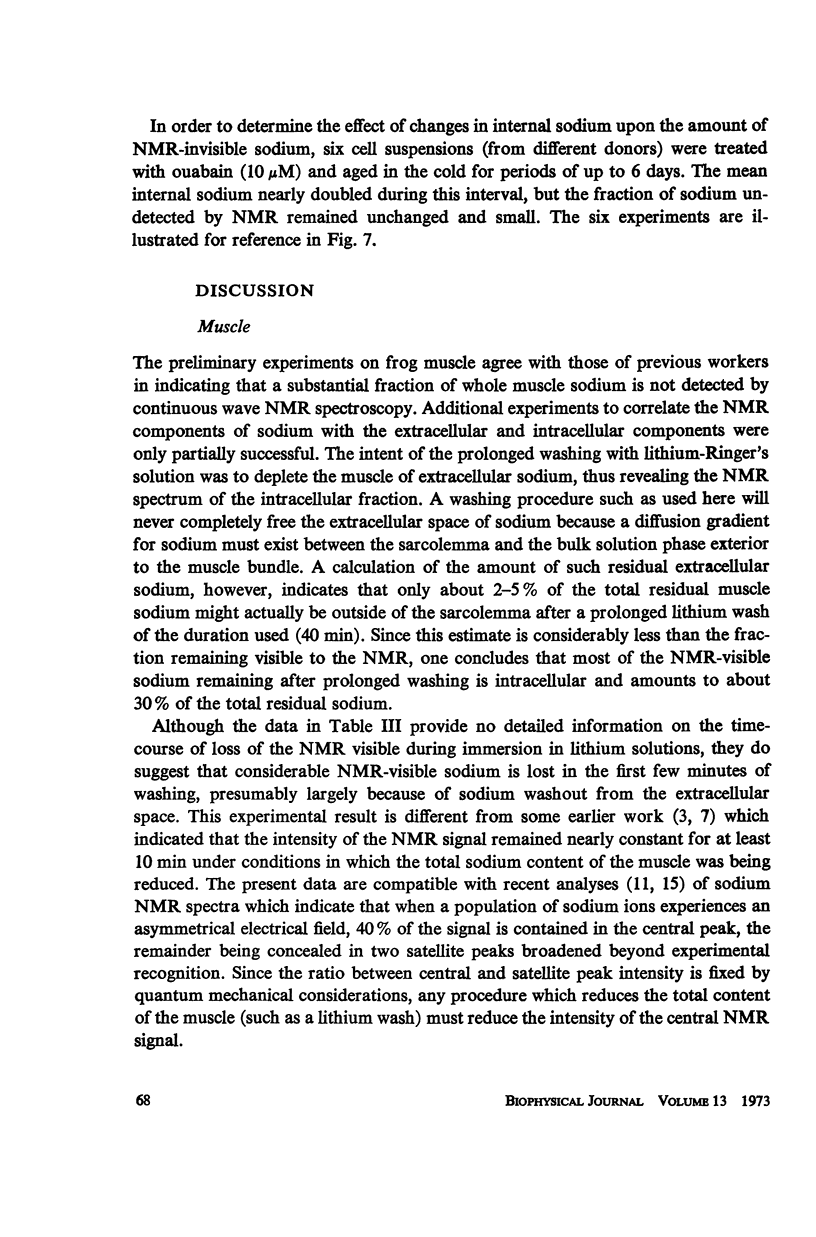
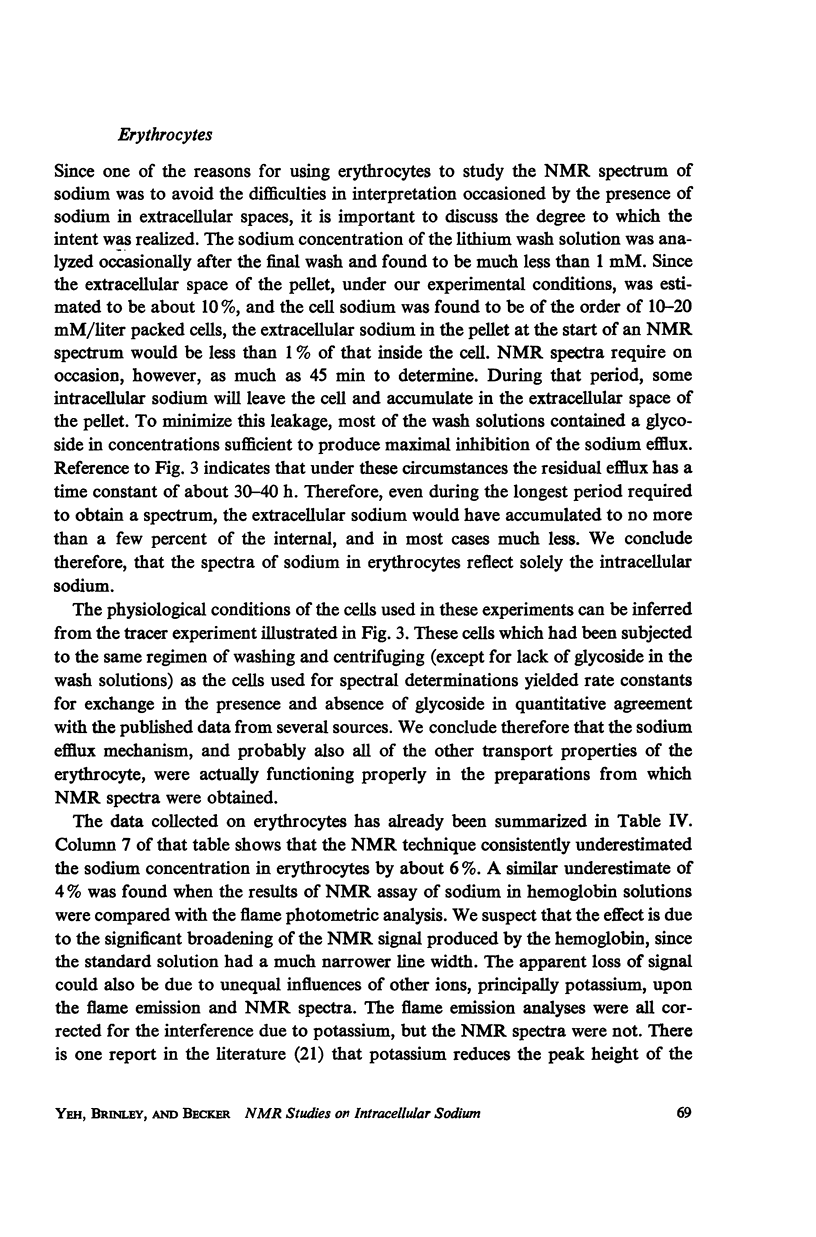
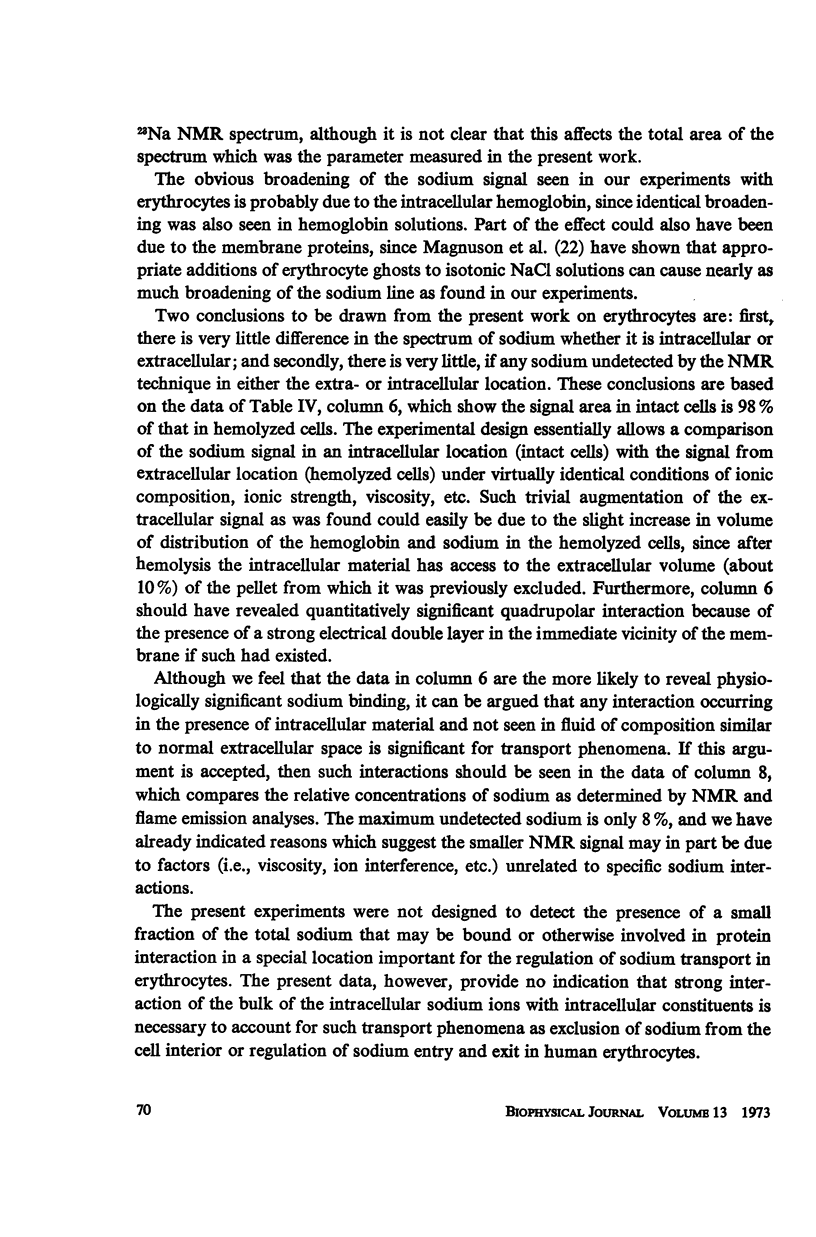
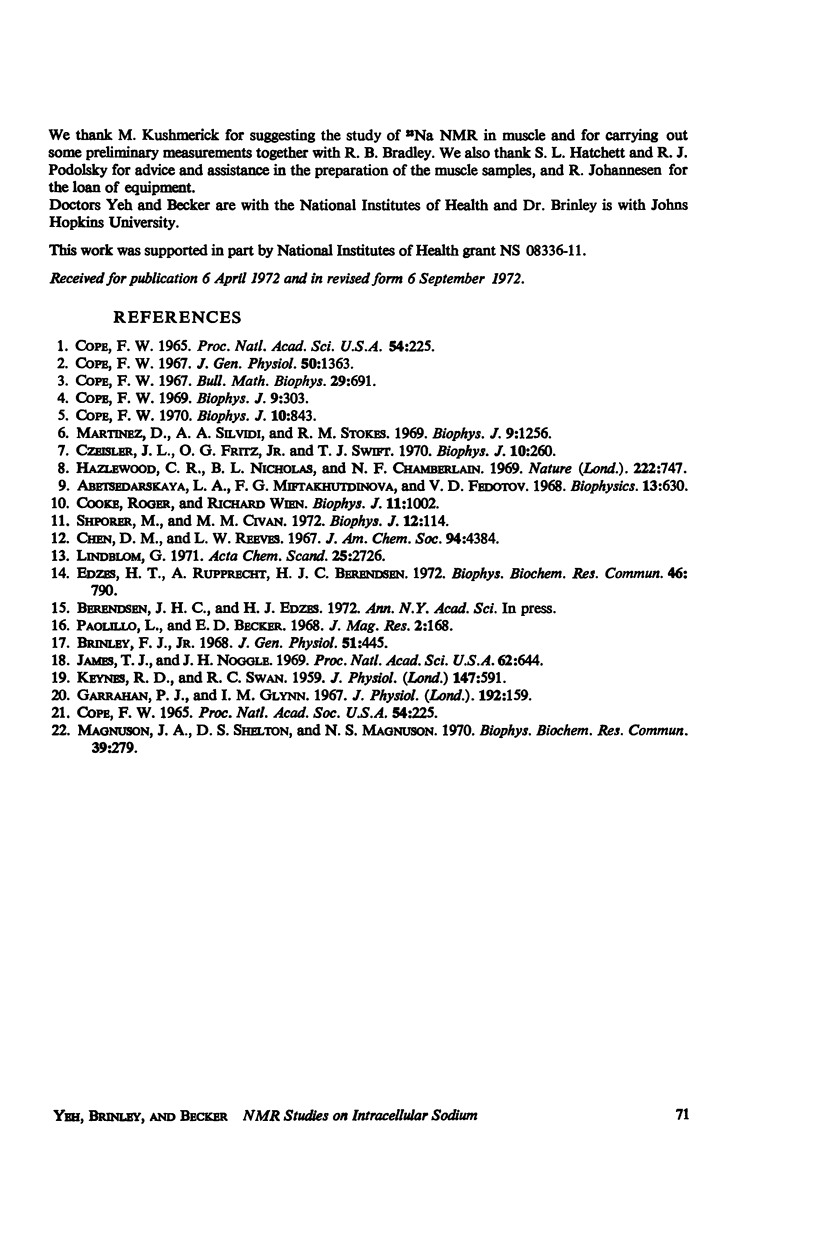
Selected References
These references are in PubMed. This may not be the complete list of references from this article.
- Brinley F. J., Jr Sodium and potassium fluxes in isolated barnacle muscle fibers. J Gen Physiol. 1968 Apr;51(4):445–477. doi: 10.1085/jgp.51.4.445. [DOI] [PMC free article] [PubMed] [Google Scholar]
- Cope F. W. A non-equilibrium thermodynamic theory of leakage of complexed Na+ from muscle, with NMR evidence that the non-complexed fraction of muscle Na+ is intra-vacuolar rather than extra-cellular. Bull Math Biophys. 1967 Dec;29(4):691–704. doi: 10.1007/BF02476920. [DOI] [PubMed] [Google Scholar]
- Cope F. W. Nuclear magnetic resonance evidence for complexing of sodium ions in muscle. Proc Natl Acad Sci U S A. 1965 Jul;54(1):225–227. doi: 10.1073/pnas.54.1.225. [DOI] [PMC free article] [PubMed] [Google Scholar]
- Cope F. W. Nuclear magnetic resonance evidence for complexing of sodium ions in muscle. Proc Natl Acad Sci U S A. 1965 Jul;54(1):225–227. doi: 10.1073/pnas.54.1.225. [DOI] [PMC free article] [PubMed] [Google Scholar]
- Cope F. W. Nuclear magnetic resonance evidence using D2O for structured water in muscle and brain. Biophys J. 1969 Mar;9(3):303–319. doi: 10.1016/S0006-3495(69)86388-5. [DOI] [PMC free article] [PubMed] [Google Scholar]
- Cope F. W. Spin-echo nuclear magnetic resonance evidence for complexing of sodium ions in muscle, brain, and kidney. Biophys J. 1970 Sep;10(9):843–858. doi: 10.1016/S0006-3495(70)86339-1. [DOI] [PMC free article] [PubMed] [Google Scholar]
- Czeisler J. L., Fritz O. G., Jr, Swift T. J. Direct evidence from nuclear magnetic resonance studies for bound sodium in forg skeletal muscle. Biophys J. 1970 Mar;10(3):260–268. doi: 10.1016/s0006-3495(70)86298-1. [DOI] [PMC free article] [PubMed] [Google Scholar]
- Edzes H. T., Rupprecht A., Berendsen H. J. Observation of quadrupolar NMR signals of 7 Li and 23 Na in hydrated oriented DNA. Biochem Biophys Res Commun. 1972 Jan 31;46(2):790–794. doi: 10.1016/s0006-291x(72)80210-9. [DOI] [PubMed] [Google Scholar]
- Garrahan P. J., Glynn I. M. The behaviour of the sodium pump in red cells in the absence of external potassium. J Physiol. 1967 Sep;192(1):159–174. doi: 10.1113/jphysiol.1967.sp008294. [DOI] [PMC free article] [PubMed] [Google Scholar]
- Hazlewood C. F., Nichols B. L., Chamberlain N. F. Evidence for the existence of a minimum of two phases of ordered water in skeletal muscle. Nature. 1969 May 24;222(5195):747–750. doi: 10.1038/222747a0. [DOI] [PubMed] [Google Scholar]
- James T. L., Noggle J. H. 23Na nuclear magnetic resonance relaxation studies of sodium ion interaction with soluble RNA. Proc Natl Acad Sci U S A. 1969 Mar;62(3):644–649. doi: 10.1073/pnas.62.3.644. [DOI] [PMC free article] [PubMed] [Google Scholar]
- KEYNES R. D., SWAN R. C. The effect of external sodium concentration on the sodium fluxes in frog skeletal muscle. J Physiol. 1959 Oct;147:591–625. doi: 10.1113/jphysiol.1959.sp006264. [DOI] [PMC free article] [PubMed] [Google Scholar]
- Martinez D., Silvidi A. A., Stokes R. M. Nuclear magnetic resonance studies of sodium ions in isolated frog muscle and liver. Biophys J. 1969 Oct;9(10):1256–1260. doi: 10.1016/S0006-3495(69)86450-7. [DOI] [PMC free article] [PubMed] [Google Scholar]


